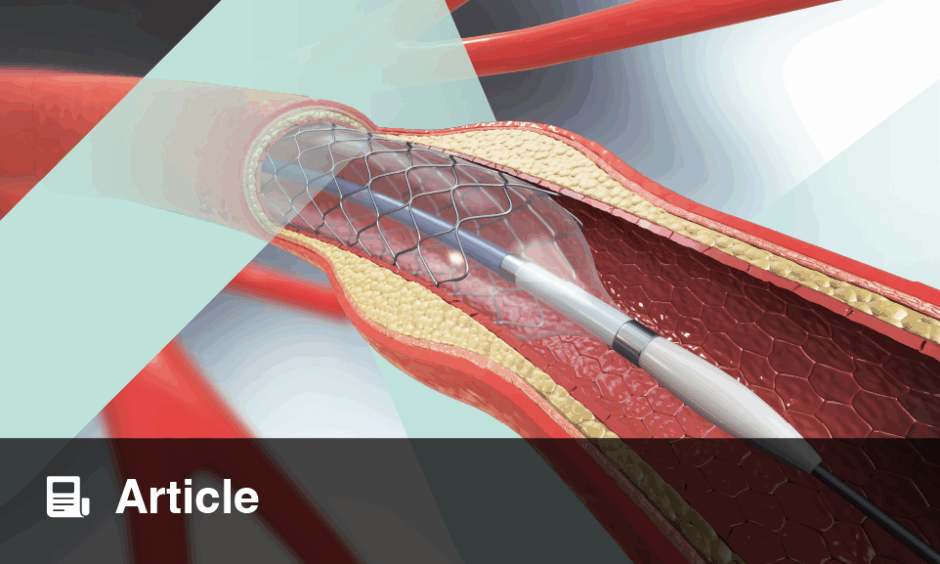There are three main physical forces acting on the walls of the blood vessels; the blood pressure, circumferential stretch of the vessel wall caused by the action of the blood pressure, and the endothelial shear stress (ESS). ESS exerted by the blood flow is determined by the shear rate (i.e. velocity gradient) at the wall multiplied by viscosity.1 Local ESS is sensed by several types of luminal endothelial mechanoreceptors. Physiological ESS activates various signalling pathways within the endothelial cells (EC) that provide structural cytoskeleton remodelling, suppressing reactive oxygen species, nitric oxide production, etc.1 Steady laminar flow with high shear stress upregulates expressions of EC genes and proteins that are protective against atherosclerosis, whereas disturbed flow with associated reciprocating low ESS upregulates the EC genes (MCP-1 and PDGFs) and proteins that promote atherogenesis.1
In order to demonstrate the acute-term effect of optimal bioresorbable scaffold (BRS) implantation on the local coronary haemodynamics, we designed the Mirage Animal Shear Stress Study to reveal the effect of two differently designed BRSs: Absorb everolimus-eluting bioresorbable vascular scaffold (Absorb BVS) and Mirage sirolimus-eluting bioresorbable microfiber scaffold (Mirage BRMS). Both BRSs are poly-L-lactic acid-based. The Absorb BVS has zig-zag hops linked by bridges, 157 mm strut thickness, 27% vessel surface coverage, and a long degradation time (36 months). The Mirage BRMS has a helix coil design, 125 mm strut thickness, 47% vessel surface coverage, and a relatively short degradation time (14 months).
The lumen and the scaffold borders were detected in the optical coherence tomography images and fused with angiographic data to reconstruct the coronary artery anatomy in 3D. Blood flow simulation and local ESS were computed with computational fluid dynamic software (ANSYS Fluent). Average ESS was estimated for each of the 17 scaffolds to account for the interdependency of individual ESS values at each 5° subunit (sector) within each cross-section. Strut type, the treated vessel, and slice lumen area were recorded to evaluate a possible relationship with ESS. The ESS was lower in the Absorb BVS compared with the Mirage BRMS for the steady flow simulation (0.891±0.783 Pa versus 1.055±0.675 Pa, respectively; p<0.001). Seventy percent of the scaffolded surface in the Absorb BVS and 52% in the Mirage BRMS was exposed to a low (<1 Pa) athero-promoting ESS environment.
The long-term effect of BRS implantation has been investigated in the study by Bourantas et al.2 Low ESS values between the struts were normalised and increased at 2-year follow-up compared to baseline. In our long-term designed study, we investigated the ESS change in the absorb Cohort B2 population. In preliminary results of the first two cases, we found that in well-expanded and symmetric apposed scaffolds, ESS values were improving. In the first case, which had an expansion index (EI) of 0.92 and symmetry index (SI) of 0.24, average ESS changed from 1.54±0.39 Pa (after implantation) to 1.43±0.14 Pa (at 5-year follow-up). Visually, the area with low and heterogeneous ESS at baseline after implantation normalised and homogenised. On the other hand, in the second case, which had an EI of 0.83 and an SI of 0.42, baseline average ESS was 1.97±0.84 Pa and at 5-year follow-up average ESS was 4.16±1.53 Pa. In concordance with the ESS results, the heterogeneous nature of ESS distribution remained at 5-year follow-up due to poor implantation indices at baseline.
In conclusion, we can say that intravascular imaging-based computational models can be used in evaluation of the haemodynamic performances of bioresorbable scaffolds. Regarding the optimal implantation, well-embedded scaffolds induce less flow disruption and fewer incidences of lower ESS at the acute phase of post-implantation. ESS is a valuable tool for demonstrating the optimal scaffold implantation results at longer follow-up and may have a value in the future for the optimisation of scaffold configuration.








